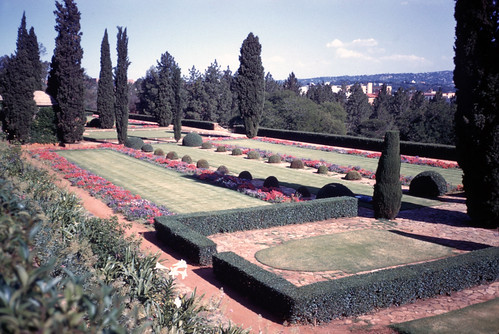Dutch Royals Confront Their Country’s Colonial Legacy in South Africa
South Africa #SouthAfrica

On their first visit to an African country since ascending the throne a decade ago, the king and queen of the Netherlands made a symbolic visit on Friday to the Slave Lodge in Cape Town, South Africa, where Dutch colonists once enslaved thousands of Africans and Asians.
As they entered the two-story building with creaky floors, they were confronted by members of another royal house: a small group of leaders of the Khoi and the San, the Indigenous groups who were first displaced 350 years ago by Dutch colonists in what is today Cape Town.
The Dutch king, Willem-Alexander, formally apologized this year for his country’s role in slavery and colonialism. But South Africa’s Indigenous groups and the descendants of those enslaved by the Dutch want a direct apology — as well as reparations — from the Netherlands for atrocities committed in South Africa during 150 years of colonialism.
“If we look at the devastation created by Dutch colonialism in this part of the world, I think a very specific apology addressing South Africa can go some distance,” said Nico Botha, head of a commission for the Khoi and the San, recently established by the South African government.
The king struck an apologetic tone on his three-day visit to the country, but made no apology or restitution, instead stressing that he was there to listen and learn.
“We share a history which, for over a century and a half, was marked by colonialism, abuse of power and slavery,” he said. “Its traces are still visible and tangible in many places.”
The Dutch king is among other European monarchs grappling with how to publicly atone for the abuses their forbears committed during Africa’s colonial era. Later this month, Britain’s King Charles III will travel to Kenya, another former colony, to “deepen his understanding of the wrongs suffered,” said Buckingham Palace. During a Commonwealth Summit last year, the British monarch expressed his “personal sorrow” over his country’s role in the slave trade.
The Dutch king, in July, asked for forgiveness on behalf of his ancestors for their role in the slave trade, calling it an “obvious lack of action against this crime against humanity.”
While South Africa and the Netherlands enjoy warm ties today, from 1652 to 1803 the Dutch ruled their colony in South Africa with violence. They conquered the San and Khoi, forcing many into indentured servitude. They also captured and trafficked 63,000 people to South Africa from as far as Indonesia, the island nation of Madagascar and neighboring Mozambique. Many were sold to farmers with land on the city’s outskirts, now kept as vineyards and orchards. At the Slave Lodge, the Dutch East India Company, acting on behalf of the Dutch government and royal family, kept 9,000 people in appalling conditions.
The Indian Ocean slave trade, though smaller than the Atlantic slave trade, was no less brutal, said Shanaaz Galant, who curated the slavery exhibit at the lodge, now a museum. There are still many gaps in the story, said Mr. Galant, “because of so much official erasure of who the people were.”
While inside the museum, Dutch royals learned the stories of those kept at the lodge, the group gathered outside said they felt ignored by the visit. Princess Dondelaya Damons of the Griqua Royal House, a clan of the Khoi and San, implored the Dutch royals to visit the townships on Cape Town’s outskirts, where the descendants of the San, Khoi and enslaved still live.
“We wanted them to compensate us with projects, like hospitals, education and especially our mines, which were taken away from us,” she told a television news channel.
The Dutch royals listened to their grievances, in keeping with their pledge to make this an educational tour. It included a trip to the Apartheid Museum in Johannesburg and a visit to Freedom Park, an open-air museum in Pretoria, which traces South Africa’s history of oppression. They mingled with L.G.B.T. activists and inspected a green energy project. The couple also met with South Africa’s president, Cyril Ramaphosa.
“Your Majesty,” said Mr. Ramaphosa, “I wish to acknowledge the apology that you have made for your country’s role in the slave trade, including in South Africa. This was an important step toward promoting reconciliation, restoration and healing old wounds.”
Khoi and San leaders are also fighting for greater recognition from the South African government, while a new generation of historians are excavating the forgotten history of slavery in South Africa.
The small protest outside the museum was indicative of the divisions within Indigenous groups like the Khoi and San. Many regard themselves as separate from South Africa’s ethnically Black majority and are disillusioned with the governing African National Congress. Still, many believe their woes began with the Dutch.
Slavery ended in South Africa in 1834, but it created a system of racial segregation that eventually became apartheid.
An apology would carry weight only if the Dutch “follow it up with something concrete,” said Cecil Le Fleur, a chief of the Griqua people. “Today our people are poor. They still suffer from the psychological scars of colonialism and apartheid.”